|
Chapter 1: Introduction |
Contents:
|
|
Introduction. |
People negotiate all the time. Friends
negotiate to decide where to have dinner. Children negotiate
to which television program to watch. Businesses negotiate
to purchase materials and to sell their products. Lawyers
negotiate to settle legal claims before they go to court.
The police negotiate with terrorists to free hostages.
Nations negotiate to open their borders for free trade.
Negotiations occur for one of two reasons:
1)
To create something new that neither party
could do on his or her own.
2)
To resolve a problem or dispute between the
parties. Because people can negotiate about so many
different things, understanding the fundamental processes of
negotiation is essential for anyone who works with other
people.
Negotiation is a dynamic process of
adjustment by which two parties, each with their own
objectives, confer together to reach a mutually satisfying
agreement on a matter of common interest.
This definition contains the essential themes which it is
the purpose of this training course aims to develop. The
chosen field is that of commercial contracts whether for the
sale, or purchase of goods and services or the construction
of engineering works.
|
|
1.1
Characteristics of a Negotiation Situation |
1.1
Characteristics of a Negotiation Situation
1.
There are two or more parties- that is, two or more
individuals, groups, or organizations. Although people can
"negotiate' with themselves - as when someone debates
whether to spend the afternoon studying, playing tennis, or
going to the football game - we will discuss negotiation as
an interpersonal or inter-group process.
2.
There is a conflict of interest between two or more
parties that is, what one wants is not necessarily what
the other one wants and the parties must, therefore, search
for a way to resolve the conflict.
3.
The parties negotiate because they think they can use
some form of influence to get a better deal that way than by
simply taking what the other side will voluntarily give them
or let them have. Negotiation
is largely a voluntary process. It is a strategy pursued by
choice; seldom are we required to negotiate.
4.
The parties, at least for the moment, prefer to
search for agreement rather than to fight openly, have
one side capitulate, permanently break off contact, or take
their dispute to a higher authority to resolve it.
5.
When we negotiate, we expect give and take. We
expect that both sides will modify or give in somewhat on
their opening statements, requests, or demands. Although the
parties may at first argue strenuously for what they want,
each pushing the other side for concessions, usually both
sides will modify their positions and each will move toward
the other.
6.
Successful negotiation involves the management of
intangibles as well as the resolving of tangibles
(e.g., the price or the terms of agreement). Intangible
factors are the underlying psychological motivations that
may directly or indirectly influence the parties during a
negotiation.
Some examples of intangibles are:
(a) The need to 'look good' to the people you
represent.
(b) The desire to book more business than any
other salesperson in your office.
(c) The fear of setting precedent in the
negotiations.
What sort of negotiation do you get involved
in?
What are the aspects of negotiation that you
feel you do well?
What are the aspects you would like to
improve?
|
|
1.2
The
Model

 |
1.2
The
Model
A negotiation is a very complex event.
Two people, or two sets of people
or even several teams come together to handle a difficult
issue about which they know only part of the story. They
have different personalities; different pressures on them;
different reasons for being there. They may not communicate
very well. They may well be suspicious of each other.
At any one time, there will not be just one
thing going on in any individual's mind. Many different
things will be going on at different levels.
To enable you to bring some order to this
highly complex event, you need a framework or a model which
you can carry around like a map to see where you are and
why, see Figure 1.1.
Figure 1.1: A simple model
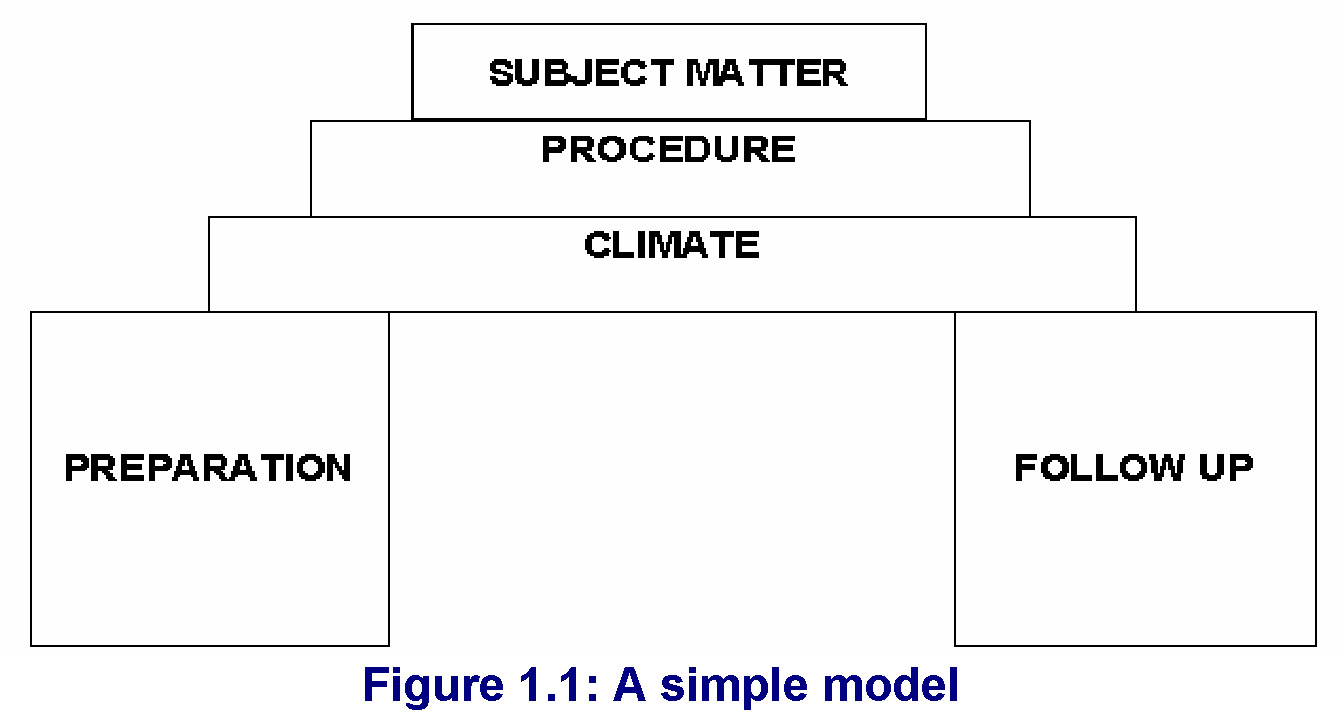
At the top of the model is the SUBJECT
MATTER of the negotiation. This is what you are
negotiating. This could be a deal for the supply of
materials, a pay deal, and a legal contract of some sort or
whatever.
The subject matter is supported by various
elements of the negotiating process-foundations. There is
the procedure by which the subject matter is discussed. What
order things are discussed in, how much time is taken and so
on. There is the CLIMATE in which the negotiation
takes places. Is it friendly?
Is it
brisk
and business - like? Or relaxed and disorganised?
These are the supports to the development of
the subject matter.
The subject matter and its supports rest on
events spread over time. These are the preparation which
takes place before the negotiation, the interactions which
take place during the negotiation and the follow up which
takes place after the negotiation.
|
|
1.3
Time
and Energy

 |
1.3
Time
and Energy
Figure 1.2 shows how energy varies with time
in a negotiation. It is, of course, very simplified.
When parties meet to negotiate, they are at a
high state of readiness. Attention and interest are high.
As the negotiation develops, the energy of
the parties tends to die away. Eventually, they reach a
stage at which they are tired and losing interest and it
becomes counterproductive to carry on.
Just before the perceived end of the
negotiation, or at any rate a meeting during the
negotiation, the energy levels of the parties rise sharply.
The same thing happens in a training session when the
trainer says, "and lastly…"
Of course, the curve is not smooth as shown
in Figure 1.2. It will ripple up and down as the negotiation
proceeds but the overall shape is correct. The two points at
which everyone's energy is at a peak are the opening few
minutes and the closing few minutes. What happens in these
two critical phases is more important than everything else.
Figure 1.2: Energy varies with time
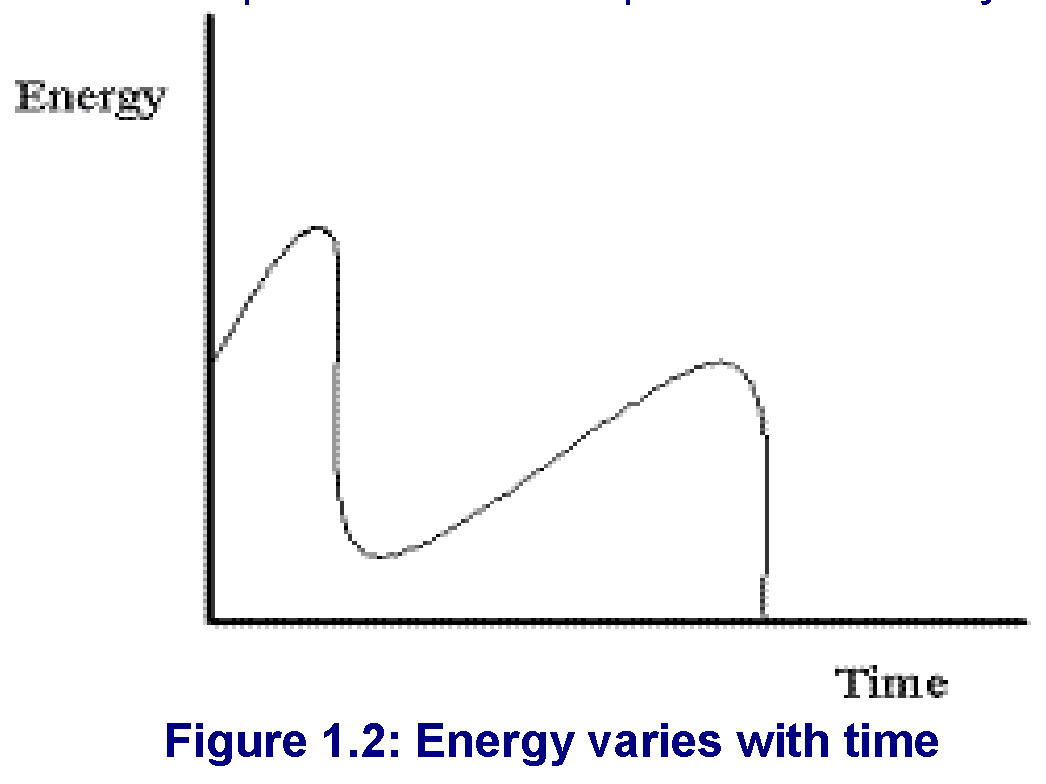
At this stage we are concerned with the
opening phase of the negotiation.
|
|
1.4
The
Climate

We
need a climate which is:
Cordial
Cooperative
Brisk
Businesslike
How Does the Climate Become Established?

|
1.4
The
Climate
The very first thing that happens when
parties meet to negotiate is that a climate begins to form.
This happens when energy is high and the climate is
established very quickly. Once established, it will not be
changed easily. First impressions last.
What sort of climate do we want? The answer
to this has to be the sort of climate which will enable us
to explore the issues most effectively and will enable us to
reach an agreement to the satisfaction of both parties in a
reasonable time.
Bill Scott explores the issue of climate
thoroughly in his book, "The Skills of Negotiating".
The conclusion he reaches is that we need
a climate which is:
·
CORDIAL
·
COOPERATIVE
·
BRISK
·
BUSINESSLIKE
By "cordial", we mean that it
has to be friendly. This does not mean that parties
have to go out of their way to like each other. It means
they should hold a competent, constructive business
discussion and not a spectacular confrontation.
By "cooperative", we mean that
the atmosphere should be one of "win-win". Each party
should be striving to help the other towards an agreement.
By "brisk", we mean that the
discussion should move at a
measured pace along agreed lines and not flounder in aimless
chat.
By "businesslike", we
simply mean businesslike! Professional!
Experience in a range of negotiations has
shown that a climate with these entire attributes stands the
best chance of producing a satisfactory outcome.
1.4.1 How Does the Climate Become Established?
The climate develops very quickly and comes
from verbal and non verbal behaviour. The climate is
determined by what people say, what they do and how they
look.
Getting the right climate is so important
that you should spend time specifically on achieving it. The
preliminaries to negotiation can be the most important part.
They can set the stage for successes or failure. You should
be prepared to spend about 5% of the likely time for the
whole negotiation just on establishing the climate. For
example, if you anticipate the negotiation taking an hour,
be prepared to spend three or four minutes on achieving the
climate before you even MENTION business. For a long
negotiation taking several days, spend an evening having
dinner with the other party before starting. Bear in mind,
too, that each party has come to the negotiation from a
different immediate experience. One may be flustered and
angry after a difficult trip. The other may have just been
informed of a crisis in his or her department and may be
wishing the negotiation had not been planned for this
particular time. They will need time to get on to the same
wavelength and focus on the subject in hand.
One of the prime influences on climate is
appearance.
It is vital that both parties dress in a way which seems
appropriate to the other. There is no right and wrong way to
dress for a negotiation. Just an appropriate way. In a
business negotiation in Britain, a smart, well groomed
appearance (suit for men, smart outfit for women) is often
appropriate. In Scandinavia, a blazer and slacks. In an
overtly creative industry like advertising, open necked
shirts and corduroy trousers may be appropriate. The
important thing is to appear in a way which shows respect
and concern for the other party to the negotiation.
When you meet for the first time in a
negotiation, concentrate first on the pace and cordial
atmosphere. Convey an enthusiastic and positive image. Be
positive in greeting the other party. Stand up if you are
sitting.
We suggest the first few moments of the meeting should be
spent standing. Talk about neutral topics, such as the
journey you have just had, the view from the room or some
conversation piece in the room.
Now we come to a critical moment in the
negotiation.
The bridging from conversation to serious discussion. It
is important that this be done smoothly and in such a way as
to maintain the momentum and cordial atmosphere. It is
absolutely essential that you have a ROUTINE. By this we
mean a standard line of development which enables you to
switch into the negotiation proper. Without this, there
will be an awkward hiatus once the parties run out of small
talk. This could destroy the climate and force you to start
all over again. We suggest you say something like, "Could we
start by agreeing on procedure?" This is hardly likely to
lead to an argument and it opens the way to the first
agreement of many as the negotiation proceeds towards
eventual overall agreement. Do phrase the opening as a
question. The other party may have an alternative procedure
in mind and if you start by saying. "I would like to start
by agreeing the procedure", the other party may say, "Well,
I would rather start by…" and you are immediately at odds.
And do allow a brief pause before opening to see if the
other party intends to open first.
A few moments spent at this stage will add
the cooperative and businesslike dimensions to the cordial
and brisk climate already established.
|
|
1.5
Procedure

Agree on:
Purpose
Plan
Pace |
1.5
Procedure
A key theme which runs throughout this
programme is to agree wherever possible. The final agreement
which results from a successful negotiation is reached
through a series of subsidiary agreements.
In agreeing procedure, you should aim to
agree on:
·
Purpose
· Plan
· Pace
First and most importantly, agree why you are
there. This is the purpose of your meeting.
If one party thinks the purpose is to reach a final
agreement and the other thinks it is to hold a preliminary
discussion, or if one thinks it is to have a technical
discussion and the other thinks it is to hold commercial
discussions, the parties will not reach a satisfactory
outcome.
Start by agreeing the purpose of the meeting.
In nine cases out of ten, you will reach agreement at once.
Once you have agreement, restate it and, if possible, write
it down somewhere easily visible. Now you have already
started to cooperate and agree!
Incidentally, if you do not agree at once, do
not argue whatever you do. Negotiate an agreement on purpose
using all the tactics and principles taught later this
program.
Now move on to the plan-the agenda. Again,
the object here is to AGREE. Even if you have agreed in
writing in advance on an agenda, get it into the open again
and see if you all still agree on it.
A good way to agree an agenda is to list all
the things YOU would like to see discussed. Then listen
while the other party or parties list their needs. Then
agree an agenda which incorporates all the points you agree
on. If you differ about some points, you will have to AGREE
either to leave them until another occasion or AGREE to
incorporate them. Do not DISAGREE on whether to discuss
them.
Now we come to pace-how long should we spend?
State how long you think the negotiation should take and
listen to everyone else's opinion. Agree on a likely time.
If you have a problem with time, you may have to
reconsider your purpose and plan. For example, if it
transpires that one party has 40 minutes available for the
negotiation and the other has all day you may need to agree
a more modest plan and purpose for the shorter time.
As well as agreeing the overall time for
the negotiation, agree in outline the time to be devoted to
each part of it. You will need to review this regularly as
the negotiation progresses. If it becomes obvious that the
original plan in not going to be completed in the time,
stand back from the subject matter and agree with your other
party a new plan.
|
|
1.6
Geography
 |
1.6
Geography
The actual layout of the negotiating area is
important.
Figure 1.3 shows a possible arrangement. Two
teams facing each other across a battlefield of teak!
Figure 1.3: Possible arrangement
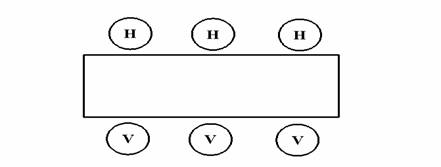
Figure 1.4 is worse. The defenders sit with
their backs to the wall while the invaders get the sun in
their eyes!
Figure 1.4: Worse setting
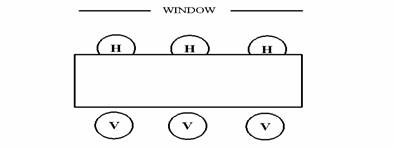
The geography can be collaborative or
antagonistic.
For many years, now, managers have been advised not to sit
behind a desk while interviewing or appraising. The same
applies while negotiating. Think about the geography and see
if you can arrange something collaborative. Again, there is
no right and wrong way to sit. Only appropriate ways.
Figures 1.5, 1.6 and 1.7 are layouts you
might consider trying….
Figure 1.5: Possible way of setting
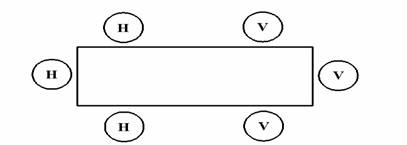
Figure 1.6:
Other way of layout of
setting
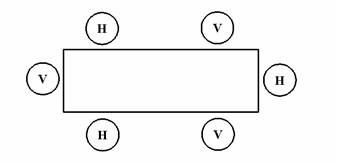
Figure 1.7: Round table possible setting

|
|
|
|
 Ngotiation Skills(1)
Ngotiation Skills(1)